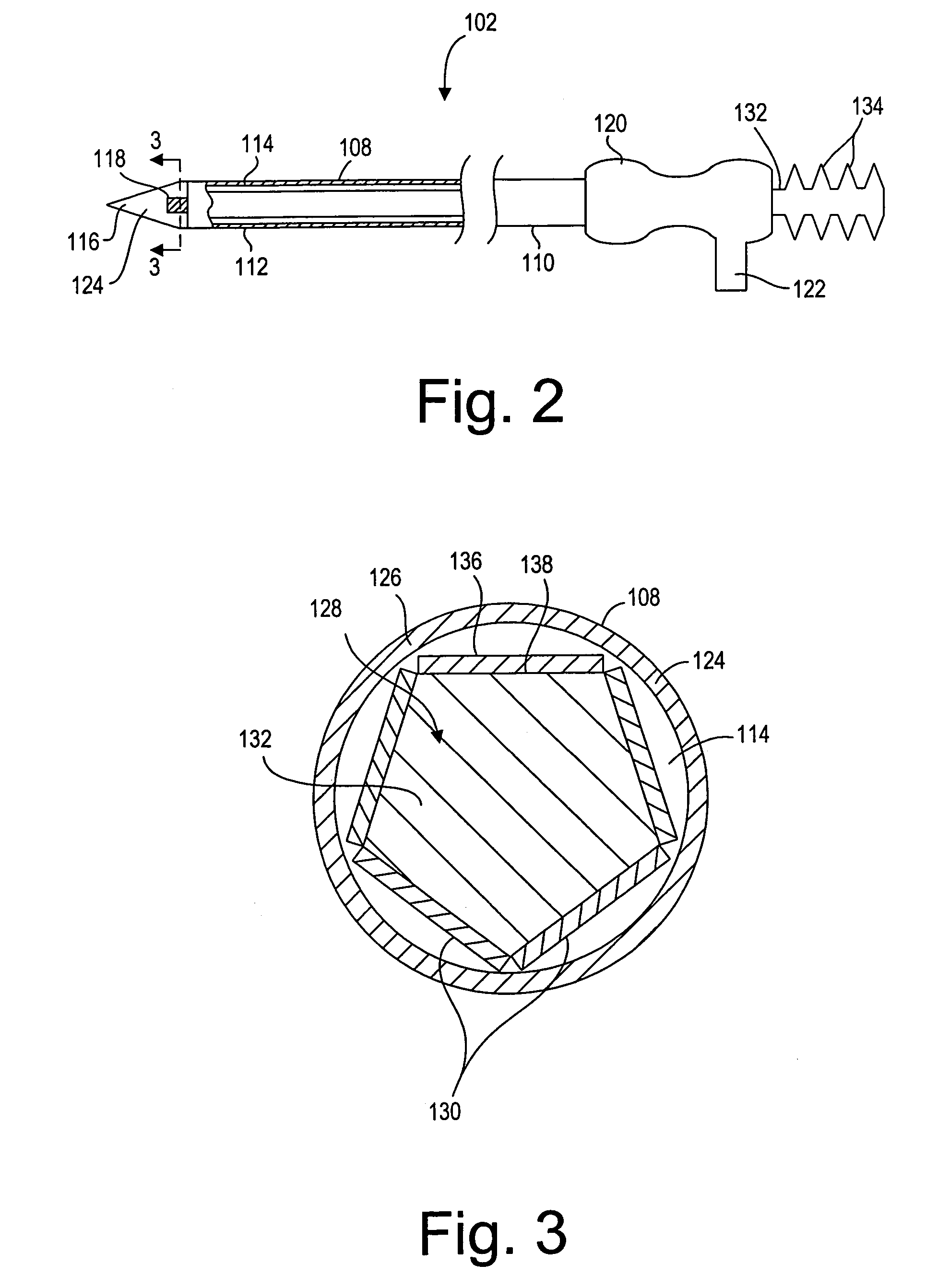Ablation probe with peltier effect thermal control
a technology of thermal control and probe, which is applied in the field of medical devices for thermal energy ablation procedures, can solve the problems of increasing treatment duration, requiring significant skill for meticulous precision of probe placement, and limited tissue coagulation diameter from a single electrod
- Summary
- Abstract
- Description
- Claims
- Application Information
AI Technical Summary
Benefits of technology
Problems solved by technology
Method used
Image
Examples
Embodiment Construction
[0035]Referring to FIG. 1, a tissue ablation system 100 constructed in accordance with a preferred embodiment of the present invention, will now be described. The tissue ablation system 100 generally comprises an ablation probe 102 configured for introduction into the body of a patient for ablative treatment of target tissue, an ablation / cooling console 104 configured for supplying both RF energy and cooling signals to the ablation probe 102 in a controlled manner, and a cable 106 electrically connecting the ablation probe 102 to the ablation / cooling console 104.
[0036]Referring now to FIG. 2, the ablation probe 102 will be described in further detail. The ablation probe 102 comprises an elongated shaft 108 having a proximal end 110, a distal end 112, and an internal axial lumen 114. The probe shaft 108 is preferably composed of a rigid or semi-rigid material, such that the probe shaft 108 can be introduced through solid tissue to a target tissue site. The distal end 112 of the probe...
PUM
 Login to View More
Login to View More Abstract
Description
Claims
Application Information
 Login to View More
Login to View More - R&D
- Intellectual Property
- Life Sciences
- Materials
- Tech Scout
- Unparalleled Data Quality
- Higher Quality Content
- 60% Fewer Hallucinations
Browse by: Latest US Patents, China's latest patents, Technical Efficacy Thesaurus, Application Domain, Technology Topic, Popular Technical Reports.
© 2025 PatSnap. All rights reserved.Legal|Privacy policy|Modern Slavery Act Transparency Statement|Sitemap|About US| Contact US: help@patsnap.com



